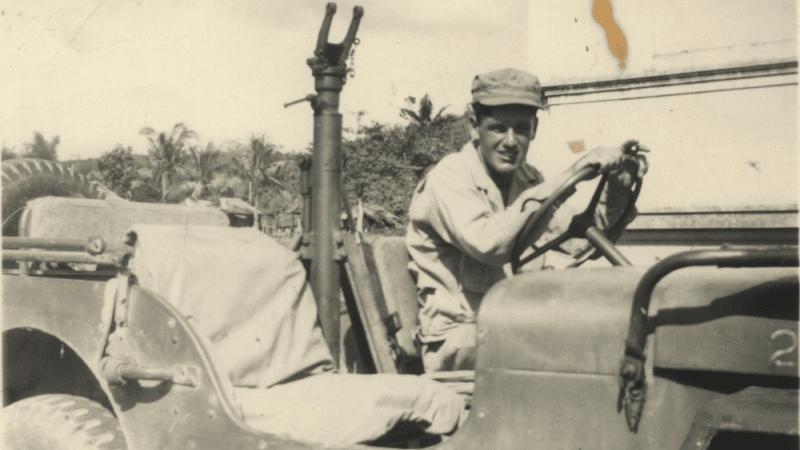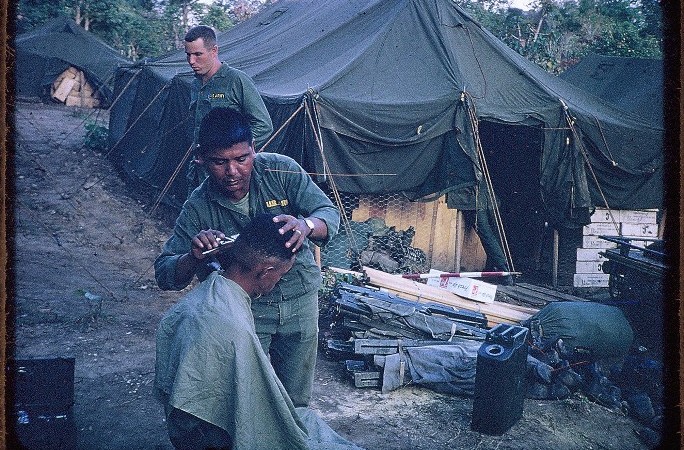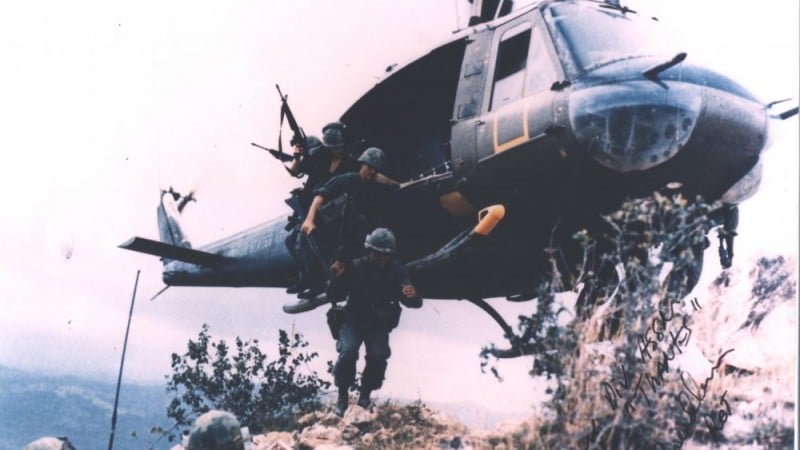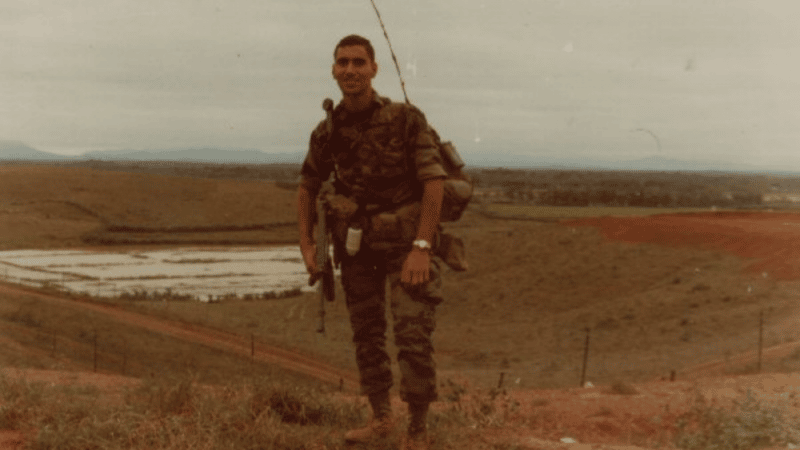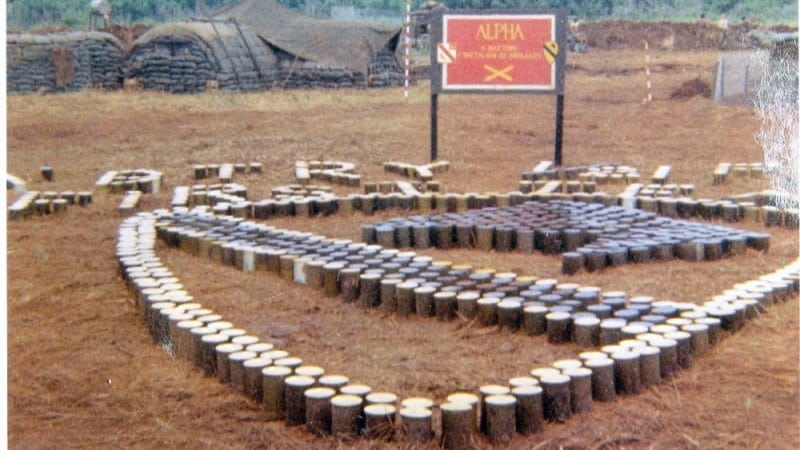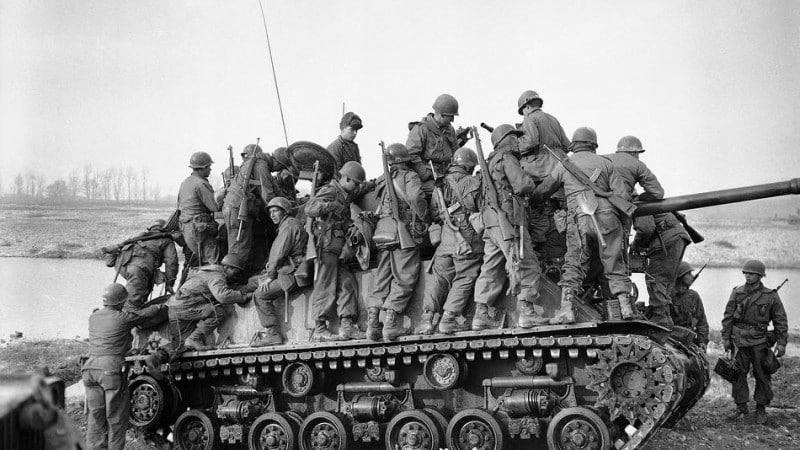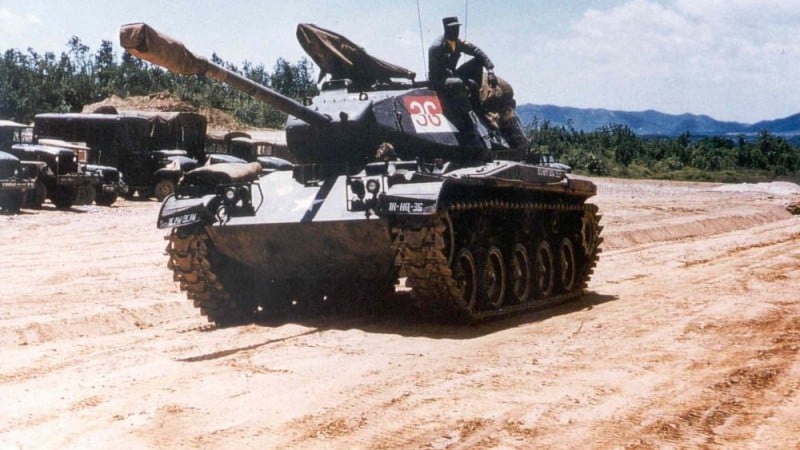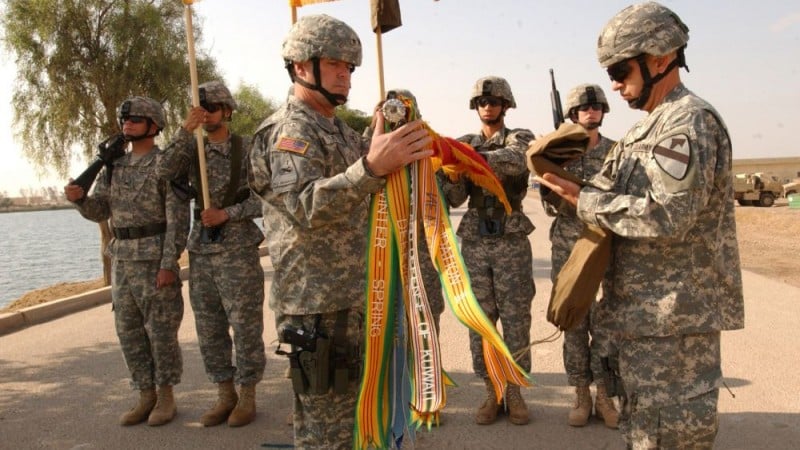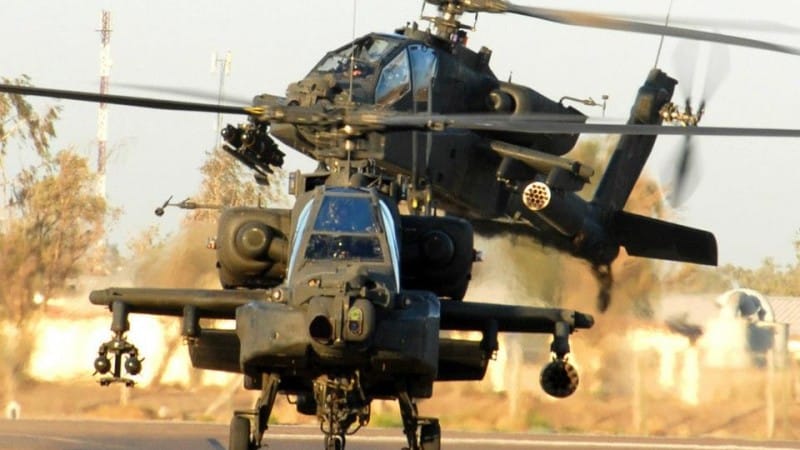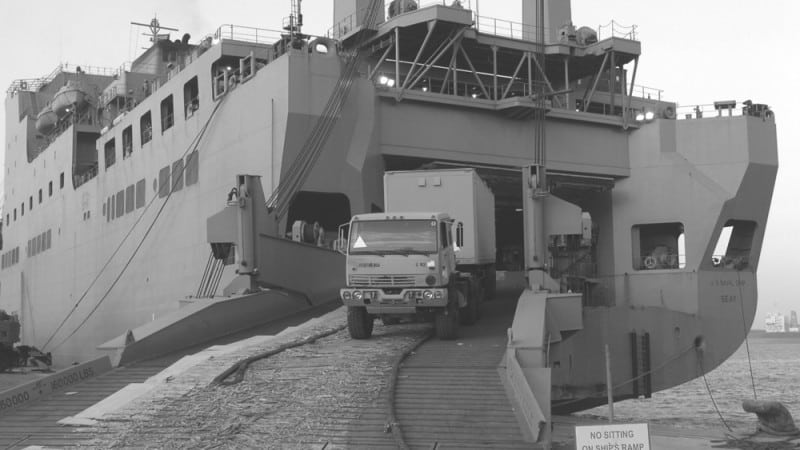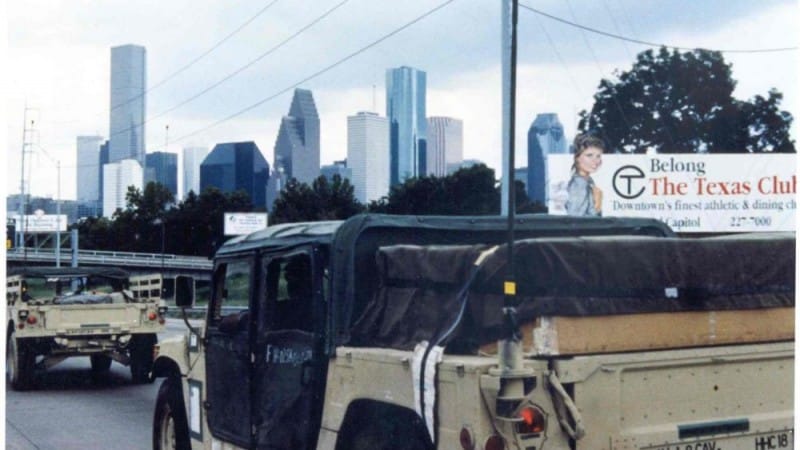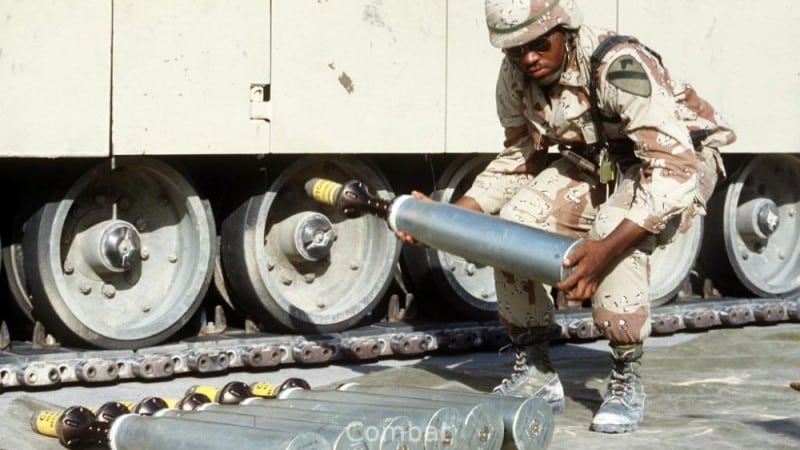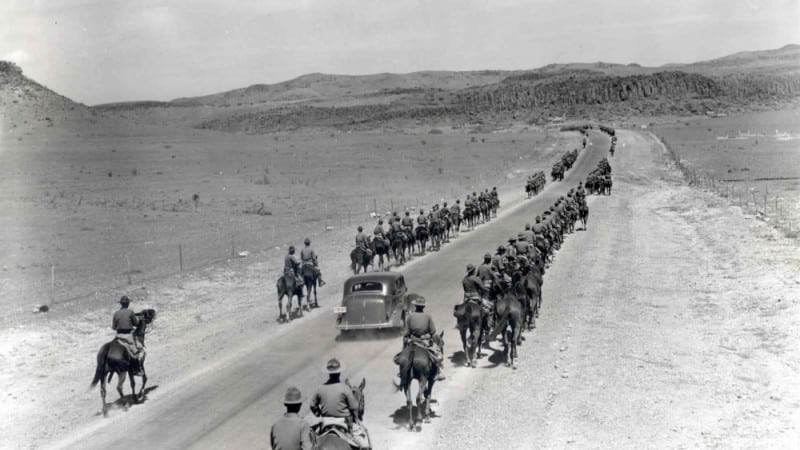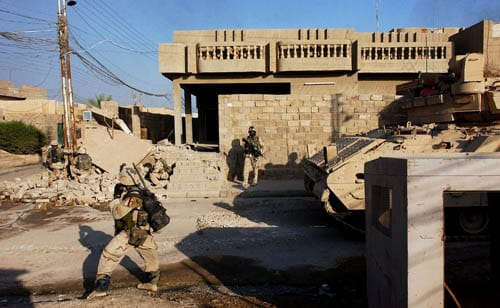2nd Brigade, 1st Cavalry Division
“Black Jack”
The history of the 2nd “Black Jack” Brigade Combat Team, 1st Cavalry Division can be traced to 29 August 1917, when it was first constituted in the Regular Army as Headquarters, 2nd Cavalry Brigade. It was organized on 27 December 1917 at Fort Bliss, Texas, as an element of the 15th Cavalry Division. The early years of the Brigade consisted of rigorous training and patrolling of the Mexican border. Operating from horseback, the cavalry was ideal for fighting in the harsh desert terrain along the Mexican border. It was relieved on 12 May 1918 from assignment to the 15th Cavalry Division and demobilized on 9 July 1919 at Fort Bliss, Texas.
It was reconstituted on 20 August 1921 in the Regular Army as Headquarters, 2nd Cavalry Brigade and assigned as a member of the 1st Cavalry Division. The unit was organized on 14 September 1921 at Fort Bliss, Texas. At that time, subordinate units consisted of the 2nd Machine Gun Squadron, the 7th Cavalry Regiment, and 8th Cavalry Regiment.
On February 1943, the 2nd Brigade was alerted for an overseas assignment as a dismounted infantry unit assigned to the Pacific theater. The first World War II combat of the Black Jack Brigade occurred in the 1944 Admiralty Island campaign. In three months of hard fighting they seized the islands of Los Negros, Hauwei, Butjo Luo, and Manus, and alongside the 1st Brigade, destroyed a force of over 3200 enemy fighters. The newly secured Admiralty Islands provided a strategically vital offensive base for Allied air and naval power, from which they could disrupt enemy supply lanes in a 1500 mile radius and provide critical support for the Allied advance during the invasion of the Philippines.
The Black Jack Brigade was called upon again during the liberation of the Philippines, where the Brigade fought in both the Leyte and Luzon campaigns. On 20 October 1944, 2nd Brigade Soldiers were among the first to storm the beaches of Leyte in what was the largest amphibious operation to date in the Pacific theater. Their contributions led to a victory that would prove to be decisive in the battle for the Philippines.
On 9 January 1945, the 2nd Brigade then participated in the invasion of Luzon, the largest of the Philippines Islands. The Brigade was the first unit into Manila, liberating the Philippine Capital and freeing over 4,000 civilians from enemy prison camps. The conquest of Leyte and Luzon were vital to operations in the Pacific, as they denied critical resources to the enemy and provided a staging area from which assaults in the Japanese home islands could be launched. The Brigade left Luzon in August 1945 for occupation duty in Japan, becoming the first Allied unit to enter the city of Tokyo.
The Brigade was inactivated on 25 March 1949 and relieved from assignment to the 1st Cavalry Division. On 20 May 1949 it was converted and redesignated as the 2nd Constabulary Brigade. The Brigade served in Germany until it was inactivated on 15 December 1951.
On 1 September 1963 the Brigade was reactivated in Korea as the Headquarters and Headquarters Company, 2nd Brigade, 1st Cavalry Division. The Brigade remained at Camp Howze in Korea until 1 July 1965, when the division colors were transferred to Fort Benning, Georgia. The division was reorganized and activated as the 1st Cavalry Division (Airmobile), the first Air Assault division of the Army. Secretary of Defense Robert S. McNamara shocked many observers when he announced that this new Air Assault division would be combat ready in only eight weeks. The 1st Cavalry Division (Airmobile) exceeded that demanding goal by reaching REDCON-1 status on July 28th 1965 and deploying to Vietnam in mid-August, only six weeks after the division’s organization. The men of 2nd Brigade boarded the USNS Buckner on 16 August 1965, en route to Vietnam and what would be their greatest challenge yet.
On 14 September 1965, the 2nd Brigade disembarked the USNS Buckner and marched onto Vietnamese shores at Qui Nhon. 2nd Brigade continued its tradition of firsts by becoming the first Brigade of the 1st Cavalry Division (Airmobile) to reach Vietnam. The Brigade, consisting of 1-5 Cavalry, 2-5 Cavalry, and 2-12 Cavalry, loaded into helicopters and flew in-land to the division base camp at An Khe.
In addition to being the first Brigade into Vietnam, the 2nd Brigade would also become the first Brigade in the division to see combat when on 18 September 1965 the 2nd Battalion, 12th Cavalry Regiment would be OPCONed to the 101st Airborne Division to participate in Operation GIBRALTAR. The 2nd Brigade was involved in many operations during their hard fought deployment in Vietnam. The most significant were:
Operation SILVER BAYONET
Operation MATADOR
Operation WHITE WING
Operation CRAZY HORSE
Operation PAUL REVERE II
Operation THAYER I
Operation PAUL REVERE IV
Operation THAYER II
Operation PERSHING
Operation LeJEUNE
Operation JEB STUART
Operation PEGASUS
Operation CAMBODIA
Operation JEB STUART III
On 5 May 1971, the colors of the 2nd Brigade, 1st Cavalry Division colors were moved from Vietnam to Ft. Hood, Texas, bringing the actions of the 2nd Brigade in the Vietnam War to a close. During 68 months of almost constant contact with the enemy, the 2nd Brigade distinguished itself through its lethal proficiency and unwavering dedication to the mission, even in the most arduous of circumstances.
The era from the Vietnam War until the Persian Gulf War was marked by unit reorganization and constant training. In 1979, 2nd Brigade participated in the Return of Forces to Germany (REFORGER) exercise. The brigade deployed to Germany to simulate the defense of Western Europe against a Soviet invasion force. In 1980, the brigade deployed to Fort Irwin, California to participate in Operation DESERT HORSE. There they conducted the largest peace time field operation to date, participating in six weeks of intense combined arms training and live fire exercises. During this operation the Multiple Integrated Laser Engagement System (MILES) was employed for the first time in training. The 2nd Brigade conducted additional REFORGER exercises in Germany in 1983 and 1987.
On 9 October 1990 the Black Jack Brigade deployed to Saudi Arabia in support of Operation DESERT SHIELD. In the Persian Gulf War, the 2nd Brigade of the 1st Cavalry Division was once again called to serve at the tip of the Army spear. The 18th Airborne Corps, which included the 1st Cavalry Division, was tasked with defending in depth in order to prevent the seizure of eastern Saudi Arabia by Iraqi forces. Operationally, the First Team was designated as the Corps counter-attack force.
In August 1995, the Black Jack Brigade deployed to Kuwait to conduct Operation INTRINSIC ACTION 95-3, a rotational force on force training exercise. The Black Jack Soldiers deployed on 48 hours notice, and 2 months ahead of schedule, in response to aggressive actions by Iraq. Following a highly successful training rotation, the brigade redeployed to Ft. Hood in November 1995.
From 1995 to 1998 the Black Jack Brigade deployed to four National Training Center Rotations and Foal Eagle 97 where, as the first fully modernized brigade in the Army, it was the first US Army unit to deploy the M1A2 tank and the M88A2 recovery vehicle outside the continental United States.
In March 1999, the Black Jack Brigade deployed to Bosnia-Herzegovina in support of Operation JOIUNT FORGE Forge as part of Stabilization Force 5 (SFOR 5), a NATO-led multi-national peace keeping force. The Black Jack Brigade conducted a relief in place with the 1st Brigade, 1st Cavalry Division in order to maintain peace and stability in Bosnia-Herzegovina. During a critical period involving the Brcko Implementation Decision and the air war against the Former Republic of Yugoslavia.
In November 2001, the Black Jack Brigade Combat Team deployed to Kuwait as a participant in Operation ENDURING FREEDOM as a direct response to the 11 September 2001 terrorist attacks on the United States. The Brigade Combat Team prepared and subsequently deployed 14 days after notification and returned to Fort Hood, Texas in early April 2002 following a highly successful operational deployment.
The Black Jack Brigade Combat Team stood combat ready when the order to prepare to deploy for Operation IRAQI FREEDOM was given. The Brigade was integral in assisting the 4th Infantry Division deploy to Iraq, as well as preparing 1st Cavalry Division Soldiers and equipment to deploy to Iraq. The Brigade stood down for the Iraq deployment in April 2003 and soon followed this mission with a National Training Center rotation in July 2003.
In January 2004 the Black Jack Brigade deployed to Iraq as the lead element for the 1st Cavalry Division in support of Operation IRAQI FREEDOM II. During the initial deployment, the 2nd Brigade Combat Team was attached to the 1st Armored Division and patrolled Western Baghdad.
The Brigade fell back under the control of the 1st Cavalry Division in May 2004. During Operation IRAQI FREEDOM I/II deployment, a 14 month combat tour, Black Jack Soldiers saw action in Western Baghdad, An Najaf, Fallujah, and Northern Babil.
Following the deployment, the Black Jack Brigade underwent a transformation to the US Army’s modular force structure. As part of the transformation, various assets that had been habitually assigned to the brigade during operations, but assigned to the 1st Cavalry Division as a whole, were made organic to the Brigade or were integrated into a Brigade Special Troops Battalion. Headquarters, 2nd Brigade, 1st Cavalry Division was reorganized and redesignated on 17 October 2005 as Headquarters, 2nd Brigade Combat Team, 1st Cavalry Division. Headquarters Company, 2nd Brigade, 1st Cavalry Division thereafter had a separate lineage. The reorganized 2nd Brigade Combat Team lost 2-12th Cavalry, but gained an organic cavalry squadron (4th Squadron, 9th Cavalry Regiment), a field artillery battalion (3rd Battalion, 82nd Field Artillery Regiment), and 15th Brigade Support Battalion.
During the transformation, the Black Jack Brigade once again answered the call of the nation and deployed to New Orleans, Louisiana in support of the humanitarian relief effort following Hurricane Katrina. During the deployment, the Black Jack Brigade provided humanitarian and military assistance to the local governance and to the citizens of the Algiers district.
The 2nd Brigade Combat Team returned to Iraq for its second deployment in support of Operation IRAQI FREEDOM 06/08 in October 2006. The Brigade assumed responsibility for central and southern Baghdad from the 4th Brigade Combat Team, 4th Infantry Division (Mechanized). On 23 November 2006, the 2nd Brigade Combat Team formally assumed responsibility of the area of operations from the 4th Brigade Combat Team, 4th Infantry Division.
The Black Jack battalions hit the ground running and assumed a variety of counterinsurgency missions to repair and rebuild a nation crippled by 30 years under a totalitarian regime. By the fall of 2007, the Brigade enjoyed successes both in combat operations and along all major lines of operation: security, economic, essential services and governance. The Brigade continued to demonstrate its flexibility, lethality and compassion while simultaneously destroying or disrupting enemy forces and continuing civil military operations.
In January 2008, the Black Jack Brigade returned to Fort Hood, Texas after 15 months of continuous combat operations and began preparing for Operation IRAQI FREEDOM 08/10 in January 2009, planning to deploy to Sadr City and Adhamiyah neighborhoods of Baghdad as part of Multi-National Division Baghdad. The Brigade was diverted at the last minute to support operations in northern Iraq. At the time, Kirkuk was generally considered to be one of the most contentious areas in Iraq. The Black Jack Brigade conducted a partnership ceremony with the Iraqi Police and the 12th Iraqi Army Division at Forward Operating Base WARRIOR on 14 February 2009.
The Black Jack Brigade partnered with Iraqi Police, the 12th Iraqi Army Division, and provincial and local civilian leadership to reduce violence by nearly 80 percent in one year. They also worked to significantly improved economic opportunities throughout the province by leveraging projects to create nearly 16,000 jobs in an area that was suffering from approximately a 30 percent unemployment. They were replaced by the 1st Brigade Combat Team, 1st Armored Division on 20 December 2009. In March 2010, Kirkuk participated in national elections for the first time since the invasion in 2003, with nearly 79-percent voter participation and no reported acts of violence.
The brigade deployed in support of “Operation New Dawn” in 2011, helping to advise, train, assist and equip Iraqi forces while simultaneously transitioning more than a half-dozen bases back to Iraqi control.
The brigade also deployed to Afghanistan during 2013-2014 in a train, advise, assist role.
In 2015, the Army began rotating whole brigade combat teams into South Korea for nine-month tour as a result of the decision to inactivate an Armored BCT of the 2nd Infantry Division that had been stationed in Korea for almost 50 years. The 2nd BCT was the first of the Brigade sized rotational units and deployed to Korea from June 2015 to February 2016.
In October 2019, the brigade deployed in support of Atlantic Resolve as part of the regionally aligned forces in Europe. The brigade operated in seven different countries including Poland, Lithuania, Romania, Bulgaria, Germany, Hungary, and Georgia and conducted multiple international training events along side allied partners to ensure stability and deter aggression.
As of today, the 2nd BLACK JACK Brigade Combat Team, 1st Cavalry Division, stands ready to lead the way to any contingency area world-wide to accomplish any mission that the future might bring.
Headquarters, 2nd Brigade Combat Team 1st Cavalry Division
Lineage and Honors
As of 14 March 2008
Lineage
Constituted 29 August 1917 in the Regular Army as Headquarters, 2d Cavalry Brigade
Organized 27 December 1917 at Fort Bliss, Texas, as an element of the 15th Cavalry Division
Relieved 12 May 1918 from assignment to the 15th Cavalry Division
Demobilized 9 July 1919 at Fort Bliss, Texas
Reconstituted 20 August 1921 in the Regular Army as Headquarters, 2d Cavalry Brigade, and assigned to the 1st Cavalry Division (later redesignated as the 1st Cavalry Division, Special)
Organized 14 September 1921 at Fort Bliss, Texas
Inactivated 25 March 1949 in Japan and relieved from assignment to the 1st Cavalry Division, Special
Converted and redesignated 20 May 1949 as Headquarters, 2d Constabulary Brigade, and activated in Germany
Inactivated 15 December 1951 in Germany
Converted and redesignated 15 July 1963 as Headquarters and Headquarters Company, 2d Brigade, 1st Cavalry Division
Activated 1 September 1963 in Korea
Headquarters, 2d Brigade, 1st Cavalry Division, reorganized and redesignated 17 October 2005 as Headquarters, 2d Brigade Combat Team, 1st Cavalry Division (Headquarters Company, 2d Brigade, 1st Cavalry Division – hereafter separate lineage)
Honors
Campaign Participation Credit |
|
World War II: New Guinea; Bismarck Archipelago (with arrowhead); Leyte (with arrowhead); Luzon Vietnam: Defense; Counteroffensive; Counteroffensive, Phase II; Counteroffensive, Phase III; Tet Counteroffensive; Counteroffensive, Phase IV; Counteroffensive, Phase V; Counteroffensive, Phase VI; Tet 69/Counteroffensive; Summer-Fall 1969; Winter-Spring 1970; Sanctuary Counteroffensive; Counteroffensive, Phase VII Southwest Asia: Defense of Saudi Arabia; Liberation and Defense of Kuwait War on Terrorism: Campaigns to be determined |
Decorations |
| Presidential Unit Citation (Army), Streamer embroidered PLEIKU PROVINCE Valorous Unit Award, Streamer embroidered FISH HOOK Valorous Unit Award, Streamer embroidered IRAQ 1991 Meritorious Unit Commendation (Army), Streamer embroidered IRAQ 2006-2008 Philippine Presidential Unit Citation, Streamer embroidered 17 OCTOBER 1944 TO 4 JULY 1945 Republic of Vietnam Cross of Gallantry with Palm, Streamer embroidered VIETNAM 1965-1969 Republic of Vietnam Cross of Gallantry with Palm, Streamer embroidered VIETNAM 1969-1970 Republic of Vietnam Cross of Gallantry with Palm, Streamer embroidered VIETNAM 1970-1971 Republic of Vietnam Civil Action Honor Medal, First Class, Streamer embroidered VIETNAM 1969-1970 |

